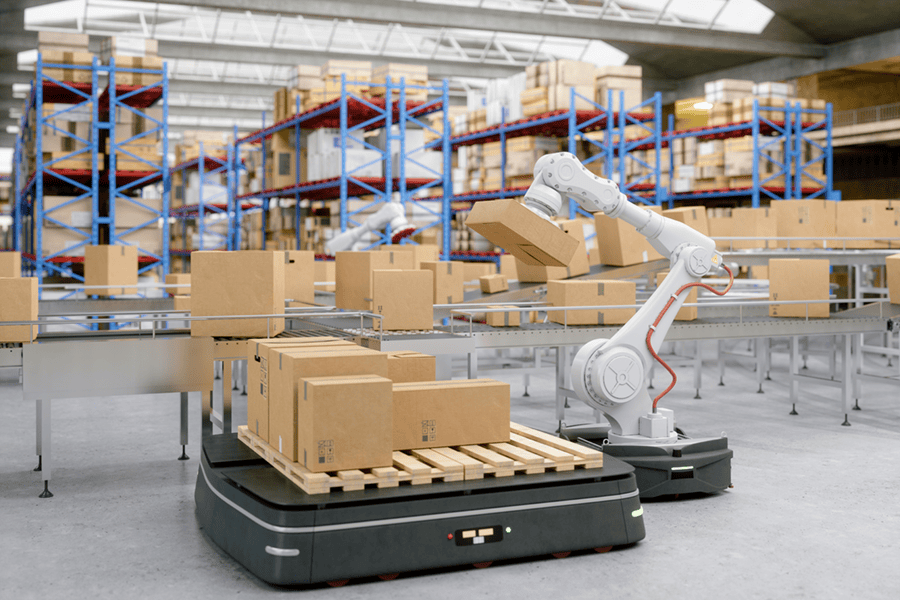The project consisted of three machines:
Manual assembly station.
- Conveyor system with automatic buffering/transfers.
- Data tracking using RFID readers and custom PLC logic.
- Vision inspection for pass/fail of parts.
- Automated reject handling based on pass/fail.
- Operator interface station to perform manual intervention.
Automated storage and retrieval system.
- Central buffer for all work in progress parts.
- Storage and retrieval of radios accomplished via integration with robot arm.
- Part data determined via RFID, data stored in custom database.
- Parts delivered to and requested from buffer fully automatically with AMRs – no operator interaction needed.
Packaging station.
- Robotic packaging system to place parts into boxes, place boxes onto pallets, strap pallets, and deliver to warehouse management system.
- Automated conveyor infeed of parts, boxes, and other consumables.
- Flexible assembly sequences based on needs of specific part.
- Integration with WMS and MES systems for fully automated sequences.
DMC programmed each machine using B&R’s PC based PLC platform. Each machine had its own Industrial PC running both Windows for the HMI and B&R’s Automation Runtime for the PLC. Operator interface was via MappView on a touch-screen panel PC. All PLC and HMI programming was done in Automation Studio, a text based IDE.

Automation Studio files are text based and human readable. Because of this, DMC was able to use a full git based development workflow during both offline and onsite development. This included automated merging features created in parallel by different developers, as well as the ability to resolve merge conflict on a line-by-line basis. This allowed quicker development and higher quality code due to efficient code reviews.
DMC integrated a large variety of communication protocols and devices for the project. This included OPC UA, PROFINET, POWERLINK, X2X, zebra printers, SQL databases, and various systems for MES, AMR, and WMS communication.
The communication backbone for the MES, AMR, and WMS systems was OPC UA. B&R’s OPC UA forward platform allowed DMC to effectively communicate with all three systems via OPC server and client methods. Each of the tools automatically requests both work in progress parts from the buffer when needed as well as additional consumable materials when low. Once a part is completed in one tool, requests are automatically sent for AMR pickup at the tool output. These automatic requests for delivery and pickup increased the plant’s efficiency and don’t require operator intervention.

To allow for efficient commissioning, DMC conducted extensive OPC UA method testing against a simulated MES environment before going onsite. This included simulated conveyor data transfers, part tracking, and failure conditions. Once onsite, DMC implemented extensive logging for OPC interactions to assist in debugging unexpected behavior. This logging was available to plant operators via the HMI, allowing DMC to quickly close the loop without having to manually go online with the system.
Overall, our expertise in B&R programming, OPC UA, and MES Integration led us to successfully provide the client with an automated assembly line system that allows the client to respond to changes easily.
Learn more about our PLC Programming expertise and contact us for your next project.